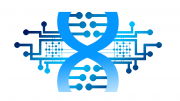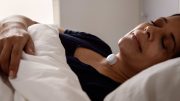By Dan Worman, co-founder at CCS
Every week, multidisciplinary teams (MDTs) made up of healthcare professionals from different healthcare settings, meet to share information or discuss the treatment needs of the Country’s most complex patients. Providing this level of integrated care requires professionals and practitioners from across different sectors to work together. However, despite good practice and particular areas of excellence, much of the IT and online services used to connect our health and social care professionals are far behind where they should be.
The newly launched NHSX unit acknowledges this, aiming to bring the benefits of modern technology to every patient and clinician. One of the key responsibilities of NHSX will be to ensure that NHS systems can talk to each other across the health and care system. But the remit also needs to focus on digital technology that lets clinicians talk to each other as an urgent priority.
While the recently updated NHS Internet First policy makes strides in this direction, public internet doesn’t always offer the level of availability, performance and integrity required for true seamless collaboration. In today’s care settings some MDTs are relying on FaceTime or WhatsApp to connect with colleagues in order to discuss treatment plans. With MDT meetings in cancer services sometimes lasting up to five hours and involving anywhere between two to 27 professionals. It’s easy to see the dangers of workarounds such as WhatsApp, the potential security and connection problems they present as well as the risks they pose to patient confidentiality and safety. It’s important to keep in mind that every minute wasted through problems with technology not only severely impacts productivity but also leads to a loss of time and money.
Care services of the future
The specialised skills and expertise held by MDTs sit right at the heart of NHSX’s vision to deliver patients with the best possible outcomes. But in order to do so, NHS organisations need the best technology. Enabling positive patient outcomes and true continuity of care requires a layered approach. Firstly, as NHSX rightly identifies, patients and clinicians need the ability to exchange the right information at the right time. But secondly and crucially to the process, treatment pathways need to be managed appropriately and that means bringing patient care together across different services, between stakeholders, clinicians and organisations. As NHS and social care organisations rely more heavily on critical business applications and services that share information, the need for an always-available collaboration service becomes crucial.
Delivering true seamless clinical collaboration
Today’s healthcare communication systems need to be more resilient than ever, which is why hospitals and Trusts are increasing looking to bring all their communications into one place. Unified communication (UC) technology does just that, giving teams of nurses, doctors and specialist consultants the ability to email, phone, instant message and video call all in one platform.
The power to coordinate communications in real-time means that healthcare professionals can easily come together for MDT meetings and discuss important cases, share information and deliver the best outcomes for patients. For instance, managed video conferencing services can help healthcare professionals to expand beyond the clinical setting, connecting with social care providers to deliver truly coordinated care. UC technologies give hospitals the tools needed to build practices and processes that deliver a ‘whole system’ approach to the provision of services – something which the NHS is currently striving for. Additionally, unlike traditional phone systems, UC platforms can be centrally managed and easily scaled. This makes them simpler and more cost effective for hospitals to maintain as well as easy to expand as locations, clinicians and support staff are added. By enhancing operational effectiveness, hospitals and specifically MDTs can look to reduce the fragmentation that occurs and continuously bring together the clinicians and organisations that are responsible for each patient’s overall care service.
Care service for the future
It’s important to remember that the quality and speed of communication has a direct impact on initiatives aiming to reduce administrative costs and deliver higher quality of care. Unfortunately, poorly-fitted technology often leads to wasted time, problems in connecting all participants together and a poor user experience – which ultimately impacts patients. The key to success is getting the basics right, facilitating inter-organisation collaboration and choosing a solution which provides a positive and enjoyable user experience and enables well-run MDTs. It’s then about layering those basics with specialist functionality, like the ability to record MDT sessions and link video content to the patients record. With access to the right information and the means to collaborate efficiently, healthcare professionals are then able to foster relationships and create a culture of trust between the patient, their family or care providers. Ensuring not only continuity of care but also an increased ability to provide patients with healthcare services for long term conditions.





